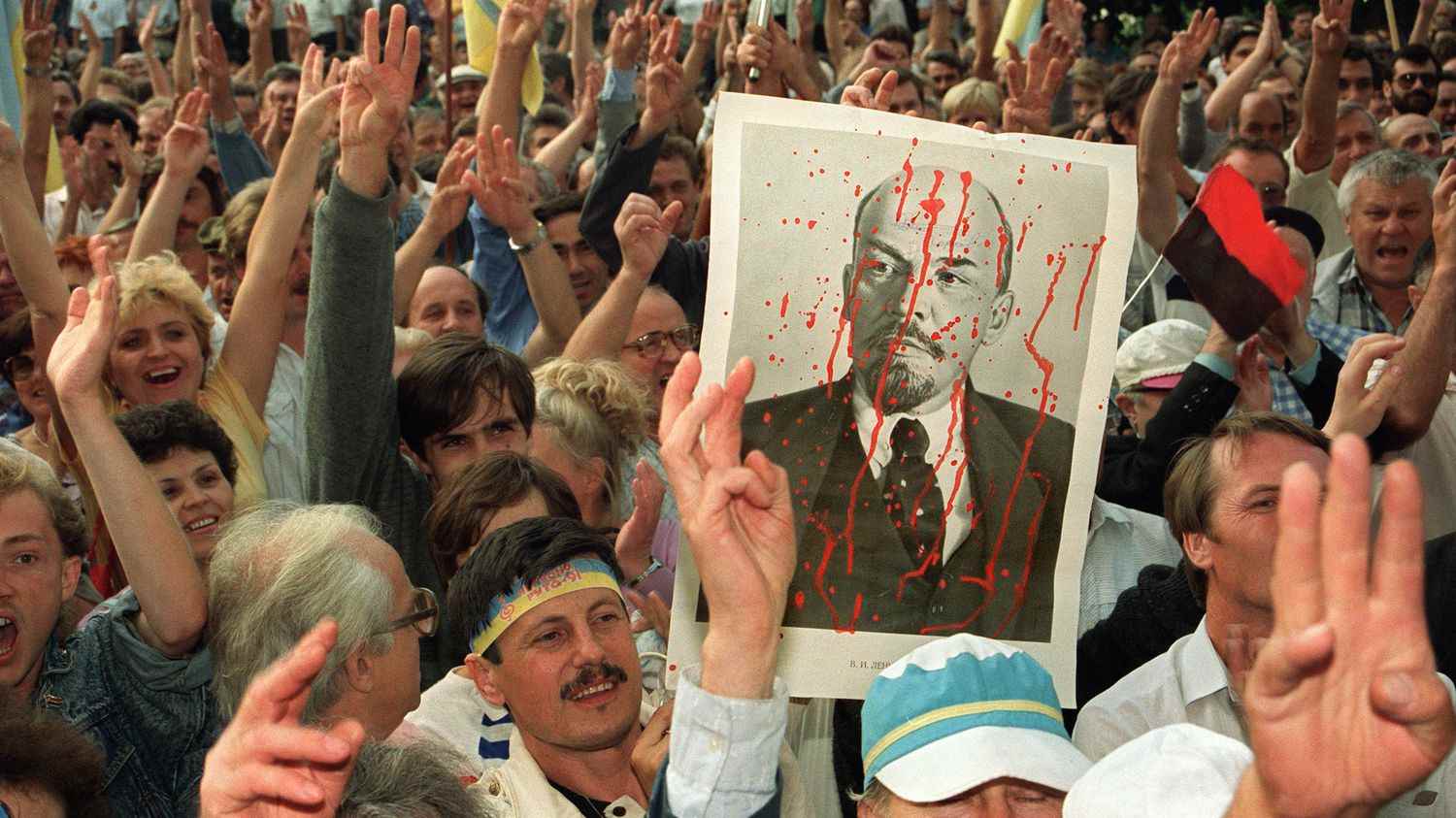Go back. Six months to the day after Russia invaded Ukraine, Ukrainian President Volodymyr Zelensky assured that his country would fight “until the end“to reconquer all of its territory, in a speech on the occasion of the anniversary of Ukrainian independence from the USSR in 1991.
>> War in Ukraine: follow the evolution of the situation live
If this Independence Day comes in a context of strong tension – Ukraine fearing possible Russian provocations -, it contrasts with the atmosphere in the streets of kyiv, 31 years ago: the Ukrainians took to the streets to celebrate the end of the Soviet era. At that time, what was Ukraine like then?
A long road to independence
It’s called the granite “Maidan”, named after the important square in the heart of kyiv, where protesters used to gather. It was 5 p.m. on August 24, 1991, when in the middle of an extraordinary session of the Verkhovna Rada, the Ukrainian Parliament, the tone rose, tempers flared. Cries burst out: in full collapse, the USSR lives its last hours, and the independence of Ukraine is decreed. In a country which is still recovering from the Chernobyl disaster, which occurred on the night of April 25 to 26, 1986, and which then inscribed its name on the map of many Westerners, it is the epilogue of monster demonstrations from Lviv to Kyiv for Democracy.

“On August 24, 1991, the Ukrainians seized very quickly an opportunity to take their independence offered by Historyspecifies Antoine Arjakovsky, historian and director of research at the Collège des Bernardins, guest of franceinfo. On August 19, a putsch of the Communist Party of the time takes place in Moscow and fails after three days, Boris Elstine emerges victorious. Very quickly, the Ukrainians understand that this is their chance, the deputies meet, proclaim the independence of Ukraine”, says the specialist.
And it was on August 24, 1991 that Mikhail Gorbachev, who resigned from the post of general secretary of the party, dissolves the Central Committee of the Communist Party of the Soviet Union. Domino effect obliges: the Supreme Council of Ukraine then promulgates the declaration of independence of Ukraine, thus marking the beginning of the end of the USSR. It will however be necessary to wait a few months for the formation of a government.
A country without a Constitution or an army
On December 1, 1991, 90.3% of citizens voted in favor of their independence. Ukraine’s first president is elected. This is Leonid Kravchuk, the former president of the Ukrainian Supreme Council. Many challenges await this apparatchik of the Soviet regime which rallied to the nationalist cause: establishing a Constitution, rebuilding the administrative apparatus, managing the economic transition, creating an army… Before independence, Ukraine’s military reserves were directed from Moscow . In 1992, the former armed forces of the Soviet Union were shared between the new sovereign states: Ukraine thus acquired one of the most powerful land armies in Europe.
“It must be remembered that all the territories were favorable to independence, with Crimea and Donbass. This precipitated the end of the Soviet Union on December 26 and the beginning of the new history of Ukraine.“, recalls Antoine Arjakovsky. Until 1989, the Ukrainian Communist Party was then the only party in the territory. By proclaiming independence, the parliamentarians demanded the dissolution of this political group. If the party succeeded in reforming in 1993 , and to become a majority in the following legislative elections, it was banned again in 2015. At issue: a law that came into force in May 2015 on the criminalization of the use of communist or Nazi symbols.

The “Breadbasket” of the Soviet Union
Antoine Arjakovsky assures him: “The Ukrainians have since fought hard to reaffirm the fact that they have their own millennial history, that they have their own identity and culture, distinct from their neighbours, Russia and Poland.“It must be said that before being a republic in its own right, the country, whose flag represents a blue sky above a field of wheat, was above all the “breadbasket” of Moscow. Indeed , if Ukrainian independence sounds the death knell of the USSR, the Soviet Union loses at the same time its first supplier of cereals.
Moreover, over the past twenty years, Ukraine’s agricultural power has only grown stronger. Today, Ukraine is the largest agricultural country on the European continent with its 41.5 million hectares of useful agricultural land. Every year, 74% of Ukrainian wheat goes abroad, especially to Africa.
A very low “soft power”
In 1991, few Ukrainians were celebrities outside the country’s borders. The most famous is undoubtedly the athlete Sergei Bubka, a specialist in the pole vault. If he then competed under the jersey of the USSR, he became the first athlete to cross the bar of six meters, on July 13, 1985. He beat the world pole vault record 35 times, between 1984 and 1994, finally setting a record at 6m15 indoors. For his part, in 1991, Volodymyr Zelensky was only 13 years old and had not yet started either the theater or politics.

